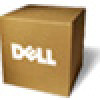Dell Vostro 1420 Owners Manual - Page 145
Touch Pad or Mouse Problems
 |
View all Dell Vostro 1420 manuals
Add to My Manuals
Save this manual to your list of manuals |
Page 145 highlights
Touch Pad or Mouse Problems CHECK THE TOUCH PAD SETTINGS - Windows XP: 1 Click Start→ Control Panel→ Mouse. 2 Adjust the settings, as needed. Windows Vista: 1 Click Start → Control Panel→ Hardware and Sound→ Mouse. 2 Adjust the settings, as needed. CHECK THE MOUSE CABLE - Shut down the computer, disconnect the mouse cable and check it for damage, then firmly reconnect the cable. If you are using a mouse extension cable, disconnect it and connect the mouse directly to the computer. TO VERIFY THAT THE PROBLEM IS WITH THE MOUSE, CHECK THE TOUCH PAD - 1 Shut down the computer. 2 Disconnect the mouse. 3 Turn on the computer. 4 At the Windows desktop, use the touch pad to move the cursor around, select an icon, and open it. If the touch pad operates correctly, the mouse may be defective. C H E C K T H E S YS T E M S E T U P P R O G R A M S E T T I N G S - Verify that the system setup program lists the correct device for the pointing device option (the computer automatically recognizes a USB mouse without making any setting adjustments). TEST THE M O U S E C O N T R O L L E R - To test the mouse controller (which affects pointer movement) and the operation of the touch pad or mouse buttons, run the Mouse test in the Pointing Devices test group in the "Dell Diagnostics" on page 115. R E I N S T A L L T H E T O U C H P A D D R I V E R - See "Reinstalling Drivers and Utilities" on page 149. Troubleshooting 145















